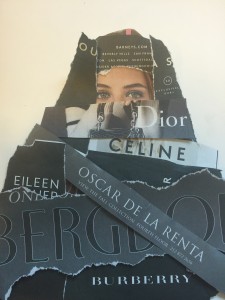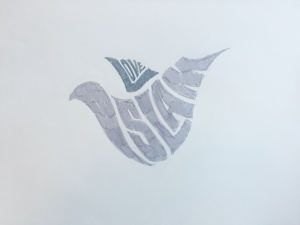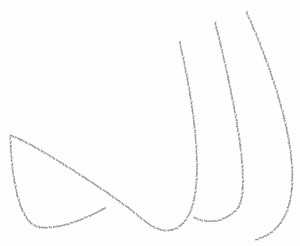Prologue
My blog entitled “Examining Islam Through Art,” is an attempt to engage with the themes of Islam creatively. The primary goal is to demystify Islam, acknowledge its universality and context, and highlight its beauty.
Typically when we think of Islam from a Western, and more importantly, American point of view, we “otherize” and exoticize the religion and those who practice it. We treat it as foreign, bizarre, and far too often, dangerous. As a child growing up in New York, the narratives of Islam I heard were ones of fear. I come from a relatively conservative town filled with cops and firefighters. When the attacks on 9/11 hit, I remember being released from school early, to a crowd of parents with tear stained eyes. Both my parents waited in the school yard for me, but not all my classmates were that lucky.
In the wake of the attacks, and for years to follow, I heard Islam spoke of as a dangerous force. To many it became ignorantly the symbol of the attack—an easy scapegoat as too many were looking for a group to blame. I remember the controversy over the proposed mosque in downtown Manhattan and dinner conversations discussing how this was unacceptable. This kind of talk though, did not come from malice, but from religious illiteracy. All we knew of Islam came from the news cycle in the wake of the attack. No one remembered or acknowledged that Islam was not that different from the Christianity or Catholicism practiced in our own neighborhood. As Asani notes in Chapter 1 of “Infidel of Love,” “the lack of religious literacy fuels antagonism and prejudice against particular groups.”
Too often, even when we attempt to engage in religious studies we boil down the religion into numbers and practices. For instance, we use the five pillars of Islam to represent the religious experience. The five pillars say that Islam is broken into five facets that define muslim life—(1) the shahada (“there is no God but God. And Muhammad is his prophet”), (2) salat or prayer, (3) Zakat or charity, (4) sawm or fasting, and (5) hajj, or pilgrimage to Mecca. Defining islam this way, however, is overly simplistic. First, the pillars never appear in the Qur’an, instead coming from the hadith of Gabriel. More importantly though, religion cannot be defined in a numbered list or chart. Religion is the experience of faith that varies by individual, country, and time.
To promote religious literacy, I adopt the cultural studies approach. Instead of engaging with the religion through merely the text, I situate the study of Islam in context—socially, politically, historically, etc. The practice and form of Islam varies based on these contexts—ranging from the beautiful and mystical sufi practices in South Asia to the Nation of Islam in the US to fundamentalist and extremist groups. Asani further explains the cultural studies approach, stating, “It maintains that religions are shaped by a complex web of factors, including political ideologies, socioeconomic conditions, societal attitudes to gender, educational status, literary and artistic traditions, historical and geographical situation—all of which are inextricably linked in influencing the frameworks within which sacred texts, rituals, and practices are interpreted.” My goal here is to examine the religion with an emphasis on artistic expression, to emphasize diversity, and to engage with Islam itself.
The first theme I want to highlight, as I introduce this blog, is the connection between Islam and the Western World. Most representations of Islam put Islam in opposition to the West. This view is simplistic and untrue. Islam itself is not anti-West. If we consider the original term, “islam,” it translates to “submission to God” and “muslim” means “one who submits.” With these terms, Christians, Jews and any other person who submits to God is muslim. The boundaries become blurred. The faith becomes inclusionary as opposed to exclusionary.
Through several pieces in my blog, I attempt to blur the lines between Islam and the West as well. Multiple pieces do this through the use of English words. For instance, in the first piece of my blog portfolio, I create the word “allah” in Arabic script out of the 99 beautiful names of God. While I could have chosen to use the Arabic words, I choose to use the English translation of each term. Although this approach does lose some of the meaning of the words, it makes “allah” less foreign. The words and themes are then digestible to a Western audience. Similarly on the dove and on the feather piece, I adopt the same approach. I once again use English words and an English translation of a quote from Conference of the Birds.
Besides the use of English, I also draw a connection to the West with the piece on the veil. I use the image of an American model and cover her with labels from American and European designers and department stores. I was attempting to create a sense of irony through this. Western women often judge the practice of the veil as one of subjugation and silencing of the women who wear them. But the veil may also be empowering to individual women. Yet, Western women’s attachment to fashion and designers could be viewed as equally restrictive or freeing, however the same judgment does not follow it.
This piece contrasts the image of the dove created out of the words “Islam” and “Love.” Here, I explicitly show that Islam itself is not violent or dangerous, as the West often views it. The symbol of peace—the dove—is physically made of the two words. Again, I use English words to convey this.
Similarly, in my final piece, I again draw the explicit connection to the West and even to NYC. I attempt to comment on the Islamophobia in the wake of the attacks on 9/11 by using the NYC skyline to create a man’s beard. Since the attacks, the beard has become a symbol of the radicalized muslim. But in the image, the man is just a man. He is even shown crying. The tear is ambiguous. We do not know why he is crying. Maybe he is saddened by the prejudice that his identity causes him in the most cosmopolitan place in the world. The tear could also connect us to the experience of Islam. As we discussed during the Qu’ran recitation unit, often weeping is an important part of Qu’ran recitation. The weeping shows that an individual is really connecting with the faith.
Outside of this explicit comparison to the West, my blog also attempts to show the universality of the themes of Islam. The pieces express themes of love, of belonging, of questioning God and Faith. These are themes that are not unique to Islam, and I would argue are universal to the human experience. By emphasizing this universality of the themes of Islam, I attempt to combat the way we treat Islam as the “other.” Because it is universal, it is not exotic or foreign. It is not so different from our own faiths.
Additionally, through many of the pieces, I tried to incorporate the idea of ambiguity of symbols. In many forms of Islamic art and express, ambiguity plays a central role. We discussed this most thoroughly when we explored the ghazals. These sufi poems expressed the concepts an experience of Islam, but did so through the use of ambiguous symbols. I think that ambiguity is central to religion. Religion in general attempts to explain the unknown. With that comes a necessary sense of ambiguity.
Through my pieces, I attempted ot express the ambiguity visually. I was inspired by the discussion of the Color of Paradise, in which someone explained that the movie is basically a ghazal. It used the ambiguity of symbols throughout to comment on the faith. In my pieces I incorporate ambiguity through the use of symbols as well. For instance, in the feather piece, it is unclear whether or not the feather is falling. This creates the ambiguity of whether or not the artist/viewer is questioning his faith or in awe. The last two pieces also incorporate ambiguity through the use of irony. Are the pieces commenting on Islam? Or are they commenting on the West using muslim tropes?
The final theme that I want to express through my blogposts is the beauty of Islam. Islam is a very aesthetic religion. For instance, the religion’s sacred text, the Qu’ran, is pure poetry. While this poetic nature is lost in English translations, the holy book is truly a piece of art. When the Qu’ran was first revealed to Muhammad, skeptics of the religion claimed that it was of human creation. Believers countered this assertion arguing that a human being could not have written such a beautiful and poetic piece. The artistic merit of the Qu’ran was proof of its divine origin.
The practice of the religion also contains artistic components. In class, we discussed the recitations of the Qu’ran as “sacred sound.” These recitations, though varying in style based on region, were entrancing. The language has a power to capture an audience and remain in their minds.
Besides the sound, Arabic calligraphy of Qu’ranic verses also demonstrates the beauty of the religion. The actual Arabic script is flexible and can be adjusted. This provides more power for expression, as the letters themselves become a statement. This is a power that the latin alphabet simply does not possess. Thus even the written word of the religion reflects the artistic merit of the faith.
Throughout my posts, I attempt to emphasize the beauty of the religion. Particularly, I use color to depict the beauty. Throughout several pieces, I use rich and vibrant blues and turquoises. These colors are striking and are often used in Islamic art, particularly in mosaic pieces. The use of blues also creates a sense of richness and majesty. Historically, blues were first used in the clothing of royalty, for the dyes to create the colors were too expensive. This history adds to the majestic and almost opulent nature that the blue provides.
There is also beauty in perfection. The second piece in the portfolio may seem the most simple. I just create a geometric pattern, modeled after common Islamic patterns. However, to create a pattern such as this requires precision and knowledge of mathematics. There is something beautiful in this type of precision—an order that entices the viewer.
When we view the pieces together, I express not only the themes described above, but I also show the diversity of the faith. The pieces are diverse in imagery, in style, and even in medium. As such, there is no one view of Islam. Going back to the cultural studies approach, the religion is influence by the social, political, economic, and cultural facets surrounding it. In turn, the practice and beliefs show wide variation.
Overall, my portfolio works to separate Islam from solely jihad. The religion is not just about holy wars. In fact, the word “jihad” literally translates to struggle. Engaging with faith is a struggle, but I hope that through these pieces you see that Islam is not inherently violent or dangerous and we can all benefit from thoughtfully engaging with it.
Enjoy!







